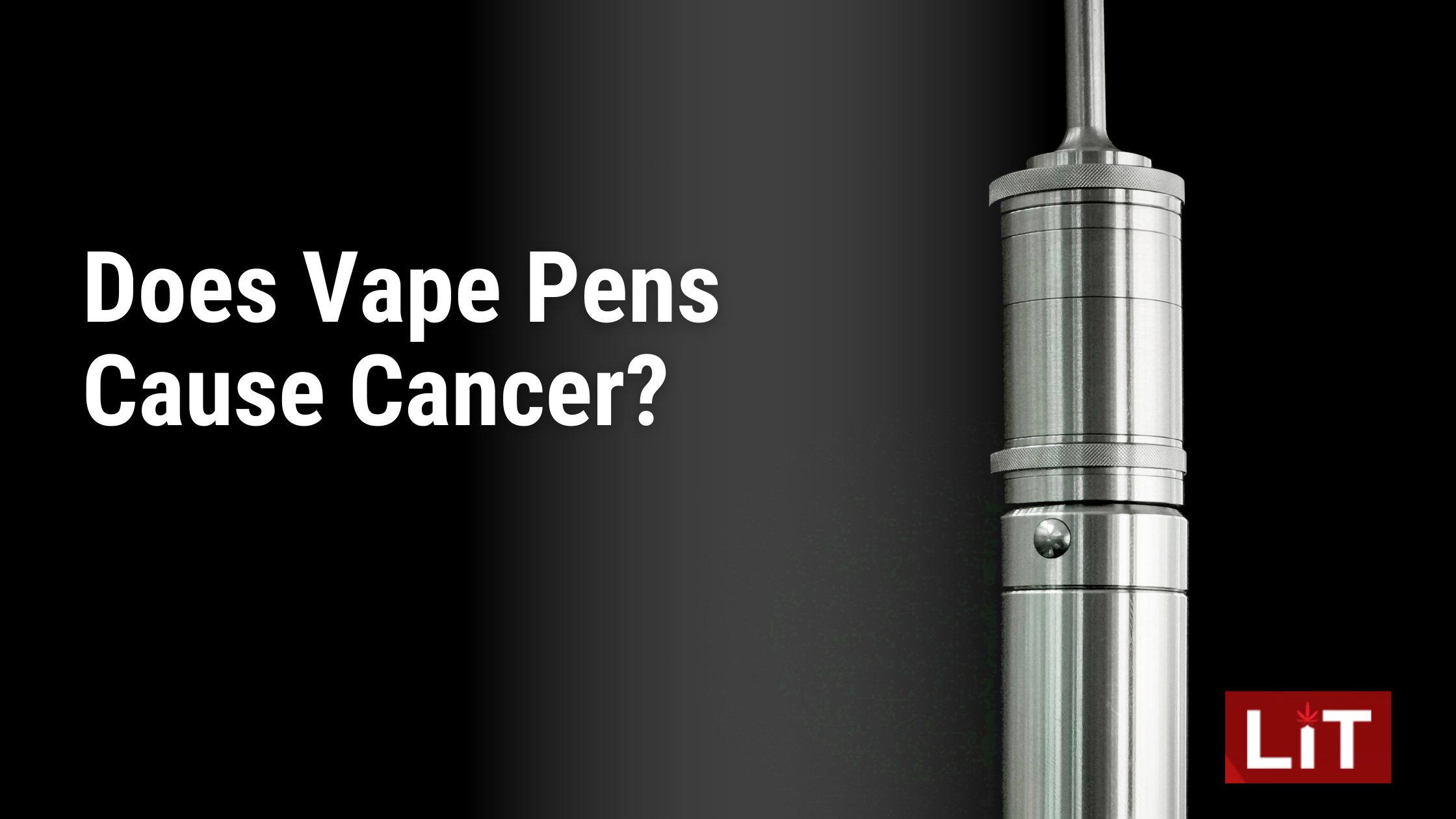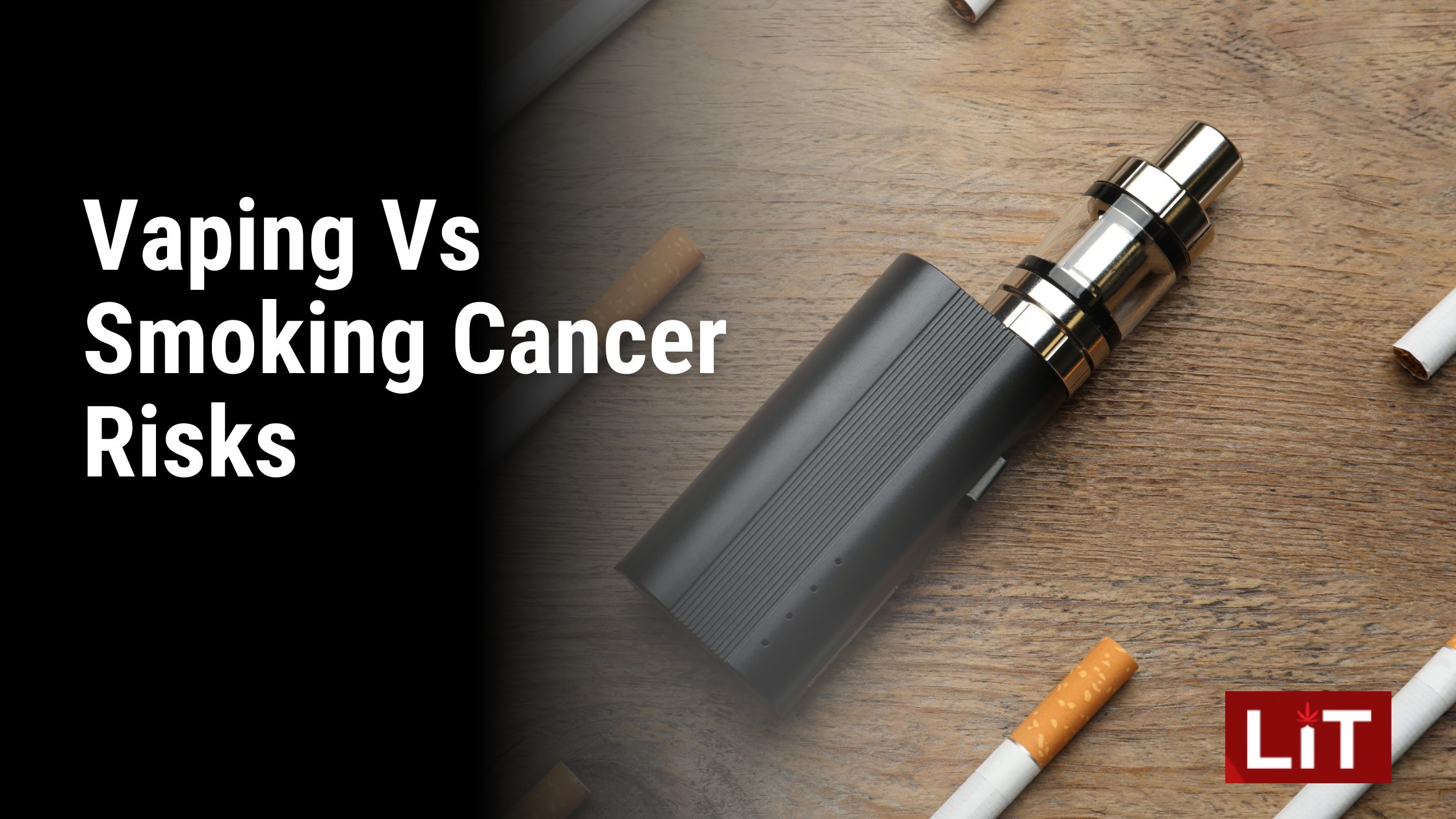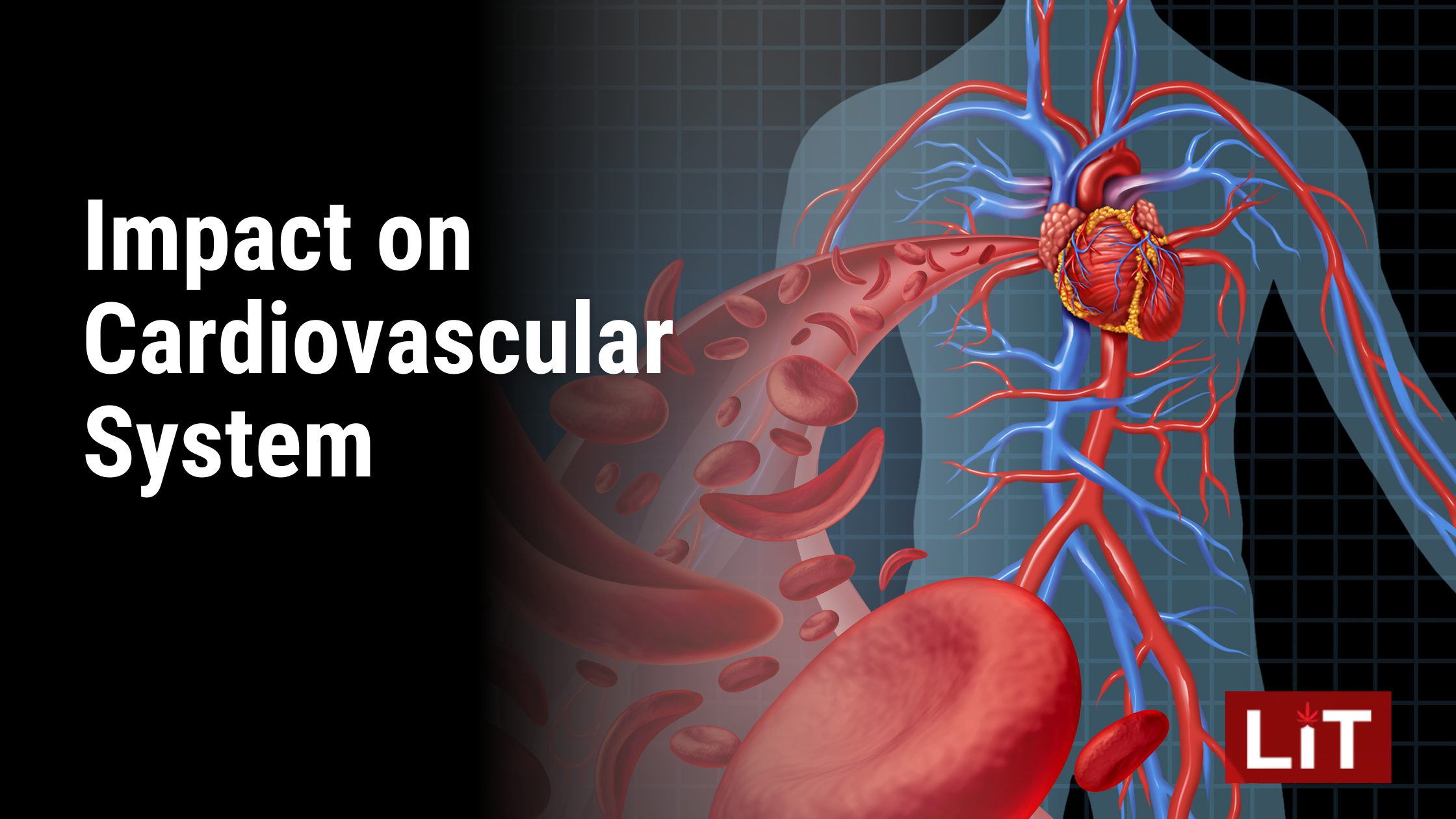They are introducing our latest range of vape pens, designed with cutting-edge technology to ensure a smoother and more enjoyable vaping experience. While every effort has been made to reduce harmful emissions, users must be aware of the potential health implications associated with vaping. Like many others on the market, our vape pens may contain traces of chemicals such as formaldehyde, nicotine, and heavy metals. These substances have been linked to various health risks, including cancer.
Nicotine, a prevalent component in many e-liquids, is known for its addictive properties and potential to cause DNA damage that could lead to cancer over long-term use. Additionally, studies have indicated a possible correlation between frequent vaping and the development of lung and other types of cancer. Therefore, while our vape pens are engineered to minimize toxin exposure—offering a safer alternative to traditional smoking—they are not entirely devoid of risk.
We believe in transparency and are committed to ongoing research to assess further and improve our products’ safety profile. Our vape pens are designed for adult smokers transitioning from traditional tobacco products, providing a cleaner alternative with significantly reduced levels of carcinogens. However, they are not recommended for non-smokers or minors.
We invite our users to stay informed and cautious about their health while enjoying our vape pens modern vaping experience. With proper usage and understanding, vaping can be a part of your lifestyle with reduced risk compared to smoking cigarettes. Keep an eye on further scientific developments for a better understanding of the long-term effects of vaping. Your safety and satisfaction are our top priorities.
Key Takeaways
- Vape pens contain carcinogens like formaldehyde and acrolein, which can contribute to cancer risk.
- Nicotine in vape pens can cause DNA damage, a precursor to cancer.
- Animal studies indicate potential for lung cancer from long-term exposure to e-cigarette aerosols.
- Frequent use of vape pens increases exposure to harmful chemicals, elevating cancer risk.
- Overheating vape juice produces formaldehyde, a recognized carcinogen, enhancing cancer potential.
Does Vape Pens Cause Cancer?

The potential carcinogenic effects of vape pens have become a significant concern due to the presence of harmful chemicals such as formaldehyde and nicotine. As the popularity of vaping increases, so do the questions surrounding its safety and long-term health implications, particularly regarding cancer. Research indicates that constituents of vape pen aerosols, like nicotine, can lead to DNA damage, which is a precursor to cancer. Nicotine, a known addictive substance, has been linked not only to lung cancer but also to promoting tumor development and metastasis in various types of cancer.
Studies have found that animals exposed to e-cigarette aerosols show signs of lung cancer and bladder precancerous changes, suggesting that similar effects could occur in humans. The transformation of nicotine into tobacco-specific nitrosamines when heated in vape pens further underscores the potential cancer risk, as these are potent carcinogens. This evidence points towards a disturbing possibility: frequent use of vape pens could indeed contribute to cancer development.
The question of ‘Can vape pens cause cancer?’ is complex and warrants extensive scientific inquiry. While the direct causation between vaping and cancer is not yet definitively proven, the existing data suggest a strong potential for harm. The presence of carcinogens like formaldehyde—a substance formed during the vaporization process—and the changes observed in users’ cellular structures align with carcinogenic exposure characteristics. Therefore, when considering ‘do vape pens cause cancer?’, it is prudent to approach vape pens with caution, acknowledging the potential risks associated with their chemical components.
Composition of Vape Juice
Understanding the specific components of vape juice is essential for evaluating the associated health risks of vaping. The primary constituents of vape juice generally include propylene glycol (PG) and vegetable glycerin (VG), both of which serve as bases that carry nicotine and flavorings. PG and VG are widely used in various consumer products, including food and pharmaceuticals, and are recognized for their ability to produce vapor when heated.
In addition to these carriers, vape juice contains a mixture of flavorings responsible for the vapor’s taste and aroma. These flavorings are similar to those used in food products, but when inhaled, their safety profile may differ significantly from their ingestion. Various studies have highlighted concerns about certain flavoring chemicals, such as diacetyl, which have been linked to severe lung diseases when inhaled in other contexts.
Furthermore, vaporizing these substances can lead to new chemicals, such as formaldehyde and acrolein, known as irritants and potential carcinogens. These substances can form when vape juice is heated to high temperatures, a scenario more likely with high-voltage e-cigarette settings. The presence and concentration of these harmful substances can vary based on the type of device used, the temperature at which it operates, and the composition of the vape juice itself.
Given this complex chemical landscape, it is clear that the components of vape juice are not inert and carry potential health risks that require careful consideration and further scientific investigation.
Nicotine Content Analysis
Evaluating the nicotine content in vape pens is essential for understanding their impact on public health. Nicotine, a key ingredient in most vape juices, is known for its addictive properties rather than its carcinogenic effects. However, the levels of nicotine found in vape pens can vary greatly, which complicates the assessment of their safety and potential health risks.
Nicotine itself does not cause cancer, but its presence is vital because it can lead to addiction and has various adverse effects on the body, particularly on the cardiovascular system. The concentration of nicotine in vape pens can influence user behavior, potentially leading to higher intake and increased exposure to other harmful substances in the vapor, indirectly contributing to health risks.
High nicotine levels in vape pens are a concern because they can perpetuate nicotine dependency, making it harder for users to quit. This dependency can lead to prolonged use of vape pens, which, despite being less harmful than traditional cigarettes in terms of carcinogens, still pose health risks due to other toxicants present. Additionally, the ease of access to devices with varying nicotine strengths may encourage experimentation among non-smokers or former smokers, potentially leading to new habits or rekindling old ones.
Understanding and regulating the nicotine content in vape pens is vital to mitigating these risks. By setting standards for nicotine levels, public health officials can better manage the potential health impacts of vaping and guide consumers toward safer practices. This approach is essential in preventing nicotine addiction and minimizing related health issues within the community.
Other Chemicals in Vapor

Vape pens release a variety of harmful chemicals, such as formaldehyde, diacetyl, and acrolein, that may pose significant health risks when inhaled. Formaldehyde, a well-known carcinogen, can form during the vaping process, particularly when e-liquids are overheated in high-voltage devices. Diacetyl, another chemical found in some flavored e-liquids, has been linked to respiratory diseases, especially the severe condition known as ‘popcorn lung.’ Acrolein, produced when glycerin and propylene glycol are heated, is toxic to the lungs and can cause severe irritation.
These chemicals are not the sole concerns. The process of heating vape juice can also lead to the formation of new toxic compounds. For instance, when certain flavorings in vape pens, like cinnamon, are heated, they can cause inflammation of lung cells, potentially increasing the risk of lung damage over time. Additionally, the presence of heavy metals such as lead, which can leach from the heating coils of vape pens, poses another cancer risk. Chronic exposure to these metals has been associated with a range of health issues, including cancer.
The inhalation of these chemicals is not just a concern for direct users but also poses a risk to bystanders exposed to the exhaled vapor. The long-term health implications of continuous exposure to a cocktail of these harmful substances are still under investigation. Still, the initial evidence points towards many potential health risks, including respiratory and cardiovascular diseases. As research continues, understanding the full impact of these chemical exposures remains critical for public health.
Short-Term Effects of Vaping
Short-term effects of vaping include throat irritation, headaches, and coughing. These immediate reactions can vary widely among individuals but are commonly reported by new and regular vape pen users. Throat irritation often arises from the propylene glycol and glycerin in many vaping liquids. These substances are known to absorb water and can lead to a dry, sore throat after vaping sessions.
Headaches are another frequent complaint linked to vaping, which may be triggered by nicotine, a potent stimulant found in most e-cigarettes. Nicotine can cause blood vessels to narrow, which reduces blood flow and can lead to headaches. Additionally, users not accustomed to nicotine may experience dizziness and nausea, compounding the discomfort associated with this symptom.
Coughing is also a prevalent short-term effect, particularly for individuals new to vaping. Vapor inhalation can irritate the respiratory tract, prompting a cough reflex. This reaction may be exacerbated by the various chemicals and flavoring agents in vape juices, which can differ significantly in composition and concentration.
Aside from these primary symptoms, some users report experiencing increased heart rate and chest pain, which are essential to monitor, especially in individuals with pre-existing heart conditions. While these symptoms are generally considered short-term and less severe, they highlight the body’s immediate response to the inhalation of substances found in vape pens. Awareness and understanding of these effects are vital for individuals considering or currently using vape pens, providing a basis for informed decisions about their health.
Long-Term Health Risks
Moreover, long-term health risks associated with vaping are increasingly concerning, mainly due to potential DNA damage and carcinogenic effects from nicotine and e-cigarette aerosols. Studies indicate that the aerosols produced by e-cigarettes can cause DNA damage in lung, heart, and bladder tissues. This damage is a critical step in the development of cancer, raising substantial concerns about the safety of long-term vaping. Additionally, nicotine, a prevalent ingredient in e-cigarettes, is linked to carcinogenic effects, especially when inhaled over a prolonged period. It can lead to mutations and promote tumorigenic cell transformation, enhancing cancer risks.
Research also highlights that certain chemicals found in e-cigarette vapor, such as formaldehyde and acrolein, are recognized carcinogens. These compounds can form when e-liquid is heated to high temperatures, a common occurrence in newer high-voltage vape devices. The presence of heavy metals like nickel, tin, and lead, deriving from the heating coils of vape pens, also contributes to the potential carcinogenic mix, complicating the risk profile of e-cigarettes.
The flavoring compounds used in e-cigarettes, such as diacetyl, which is often used to create a buttery flavor, have been associated with respiratory diseases and could potentially contribute to lung cancer development. The industry’s portrayal of vaping as a safer alternative to smoking does not align with emerging data suggesting a severe potential for harm. This discrepancy underscores the necessity for consumers to approach vaping with heightened caution and for ongoing research to clarify the full extent of its health implications.
Vaping Vs Smoking Cancer Risks

Comparing the cancer risks associated with vaping to those from traditional smoking, studies indicate that both practices expose users to carcinogenic substances, albeit through different mechanisms and concentrations. Traditional cigarettes combust tobacco, releasing a well-documented array of carcinogens, including tar, benzene, and formaldehyde. In contrast, e-cigarettes heat a liquid containing nicotine, flavorings, and other chemicals, producing an aerosol. The process of heating this e-liquid can form new chemical compounds such as formaldehyde and acrolein, both identified as potential carcinogens.
Research shows that while the overall levels of carcinogens in vape aerosol are generally lower than those found in cigarette smoke, they are not absent. Importantly, e-cigarettes can produce significant amounts of formaldehyde when used at high voltages. Furthermore, the presence of nicotine, regardless of the delivery method, is concerning due to its role in promoting tumor development and cancer progression.
Additionally, studies have identified that e-cigarette aerosol can cause DNA damage in lung, heart, and bladder cells and increase the risk of developing cancers in these organs. The long-term implications of such cellular changes are still under investigation, but they underscore potential cancer risks associated with vaping.
Despite the perception of e-cigarettes as a safer alternative, both vaping and smoking offer substantial cancer risks, highlighting the need for rigorous regulation and public education on the health implications of both. As research evolves, understanding the nuances of how each method contributes to cancer risk will be vital in guiding public health policies and consumer choices.
Research on Vaping and If Vape Pens Cause Cancer
Recent studies have demonstrated that aerosols from e-cigarettes can cause DNA damage in lung, heart, and bladder tissues, raising serious concerns about the carcinogenic potential of vaping. This research indicates that the inhalation of these aerosols can lead to cellular mutations that potentially increase the risk of cancer development in these organs. The presence of harmful substances such as nicotine, formaldehyde, and heavy metals, which are often found in varying concentrations in e-cigarette vapor, can contribute to this thorough genotoxic effect.
The mechanisms through which vaping induces these harmful effects are still being elucidated. However, the correlation between exposure to e-cigarette aerosols and the formation of DNA adducts—a form of DNA damage where a chemical compound covalently binds to DNA—has been consistently observed. DNA adducts are known to compromise the integrity of the genome and are considered a critical step in the carcinogenesis process.
Moreover, the variability in device output and the composition of e-liquid can also influence the extent of exposure to these toxicants. Higher voltage settings on e-cigarettes can produce more aerosol but can also lead to the increased generation of toxic compounds, potentially elevating the risk of cancer.
Furthermore, the long-term implications of these findings remain a significant concern in public health discussions as the popularity of vaping continues to rise, especially among younger demographics. The ongoing accumulation of evidence pointing to the potential harms of vaping necessitates rigorous regulatory scrutiny and detailed research to definitively determine the cancer risk associated with the long-term use of vape pens.
Key Studies Reviewed
Several pivotal studies have underscored the carcinogenic potential of e-cigarette aerosols, revealing significant DNA damage in the essential organs of exposed animals. For instance, a landmark study conducted on mice demonstrated that exposure to e-cigarette aerosols resulted in DNA damage in lung, heart, and bladder tissues. The same study also reported that these mice showed increased rates of lung adenocarcinoma and bladder urothelial hyperplasia, suggesting a direct link between vaping and cancer development.
Further research has explored the specific components of e-cigarette vapor, such as nicotine and NNK (a tobacco-specific nitrosamine), which are known carcinogens in traditional cigarettes. These studies have affirmed that these compounds can similarly induce DNA damage and mutations and promote tumorigenic cell transformation when inhaled through vaping. This is particularly concerning given the high levels of nicotine found in many e-cigarettes, which might pose even more significant risks than previously estimated.
Moreover, investigations into the effects of prolonged exposure to e-cigarette aerosol have indicated potential carcinogenic effects in long-term inhalation scenarios. These findings are critical as they challenge the often perceived safety of e-cigarettes compared to traditional smoking. Heavy metals and formaldehyde at high concentrations, especially in high-voltage e-cigarette devices, further compound these risks, highlighting the urgent need for in-depth regulatory review and potentially stricter control measures to protect public health.
These studies collectively contribute to a growing body of evidence suggesting that the safety of e-cigarettes should be scrutinized more rigorously to assess their long-term health implications fully.
Experts’ Opinions on Vaping

How do experts interpret the growing body of research linking vaping to cancer risks? Many in the medical and scientific communities express concern over the carcinogenic potential of substances found in vape pens. Notably, chemicals such as nicotine, formaldehyde, and heavy metals, which are sometimes present in e-cigarette aerosols, are under scrutiny for their cancer-causing potential. Researchers have observed that these compounds can cause DNA damage, a crucial precursor to cancer. This damage has been documented in essential organs like the lungs, heart, and bladder, areas directly affected by inhaled substances.
Numerous studies point to the mutagenic effects of nicotine and its derivative NNK, a known tobacco-specific carcinogen, which is also found in e-cigarettes. These substances have been shown to induce mutations and transform normal cells into potential cancer cells, an alarming finding for regular users of vape products. The transformation and mutation of cells are fundamental to the development of cancer, hence the growing alarm among experts about the long-term use of vape pens.
Furthermore, there is a troubling aspect regarding the perception of vaping as a safer alternative to smoking. The e-cigarette industry often markets these devices as less harmful, which can mislead consumers about the serious health risks, including cancer, associated with their use. While definitive conclusions are still forthcoming, the consensus in the scientific community leans towards a cautious approach to endorse vaping as a safe alternative. Experts continue to advocate for more thorough studies to clarify the full spectrum of health impacts associated with vaping.
Vape Pens and Lung Health
Exploring the impact of vape pens on lung health reveals that these devices can expose users to harmful chemicals like formaldehyde, heavy metals, and diacetyl, all of which are linked to significant lung problems. Formaldehyde, a known carcinogen, is particularly concerning as it can form when e-liquid is overheated within vape pens. This overheating can occur more frequently in high-voltage vaping devices, capable of producing a more significant amount of aerosol but at the risk of higher toxin release.
Heavy metals such as lead, nickel, and chromium can also be found in the aerosols produced by vape pens. These metals come from the heating coils within the devices and can be inhaled deep into the lungs, posing risks of respiratory distress and other pulmonary diseases. Diacetyl, commonly used in flavorings for its buttery taste, has been associated with bronchiolitis obliterans, a condition colloquially known as popcorn lung. This severe lung disease obliterates the tiny airways in the lungs, leading to severe and irreversible breathing problems.
Moreover, the continuous inhalation of these toxic substances can irritate the airways, leading to chronic symptoms such as coughing, wheezing, and shortness of breath. Over time, this exposure can escalate the risk of developing more severe respiratory conditions, including lung cancer. Given these potential risks, individuals considering or currently using vape pens should know these health implications. It’s imperative for ongoing research to further elucidate the full spectrum of health consequences associated with vaping, ensuring users are fully informed about the risks tied to these popular devices.
Oral Health Concerns
In addition to respiratory issues, vaping is also linked to significant oral health concerns. The use of e-cigarettes has been associated with various adverse effects on oral health, such as gum inflammation and dry mouth. These conditions can lead to more severe dental issues if not addressed promptly.
The presence of harmful chemicals like formaldehyde in vape pens can damage oral tissues and cellular structures. This exposure increases the risk of developing oral diseases, including periodontal conditions. Additionally, the nicotine found in many vape pens contributes to reduced blood flow to the gums. This reduction in blood circulation can compromise gum tissue health, potentially leading to gingival recession and increased susceptibility to infections.
Another concern is the impact of vaping on saliva production. Saliva is vital in maintaining oral hygiene as it helps neutralize acids produced by bacteria in the mouth, washes away food particles, and provides disease-fighting substances throughout the mouth. However, chemicals in e-cigarettes can significantly reduce saliva flow, leaving the mouth more vulnerable to cavities and gum disease.
Additionally, vaping is often associated with bad breath and tooth discoloration. The ingredients in e-liquids can leave residues that stain the teeth and contribute to persistent bad breath, further affecting an individual’s oral and overall well-being.
Given these points, vaping poses several risks to oral health, highlighting the importance of awareness and precaution among users. It is advisable for individuals using vape pens to regularly consult with dental professionals to monitor and manage any emerging oral health issues effectively.
Impact on Cardiovascular System

Vaping is associated with significant cardiovascular risks, including increased heart rate and blood pressure. Studies indicate that the inhalation of nicotine from vape pens leads to immediate cardiovascular responses; nicotine acts as a stimulant on the nervous system, causing blood vessels to constrict and forcing the heart to work harder to circulate blood. This can escalate the user’s risk of developing hypertension and other heart-related issues over time.
Further exacerbating the cardiovascular threat, the chemicals found in vape pens, such as formaldehyde and acrolein, have been linked to heart disease. These substances can cause damage to the lining of blood vessels, leading to atherosclerosis, a condition characterized by the hardening and narrowing of the arteries, which can ultimately lead to heart attacks and strokes. Heavy metals like nickel and lead, which can leach from the heating elements of vape pens, also contribute to cardiovascular problems by promoting oxidative stress and inflammatory responses within the vascular system.
Long-term exposure to the aerosols from vape pens is concerning as well. Continuous use may result in arterial stiffness, an early marker of cardiovascular disease. This condition makes it harder for the arteries to expand and contract as needed, placing additional strain on the heart and increasing the likelihood of cardiovascular complications.
Given these findings, individuals considering vaping should be aware of the potential for serious cardiovascular effects. Healthcare providers must guide patients in understanding these risks, especially those with pre-existing heart conditions or susceptibility to heart disease.
Vape Pens and DNA Damage
Studies have linked the use of vape pens to DNA damage in various tissues, including those of the lung, heart, and bladder. The presence of harmful substances such as nicotine and nitrosamines (NNK) in the vapor emitted from these devices is particularly concerning. These chemicals have been shown to induce significant genetic instability in cellular models, a precursor to malignant transformations.
Research involving animal models provides additional evidence of this risk. For instance, experiments conducted on mice have demonstrated that exposure to e-cigarette aerosol results in detectable DNA damage in lung, heart, and bladder cells. Such findings are indicative of the mutagenic potential of substances inhaled through vaping. Furthermore, these studies have observed that the extent of genetic damage correlates with the duration and intensity of exposure, suggesting a cumulative effect.
The mechanism behind this DNA damage likely involves the formation of free radicals and reactive oxygen species as by-products of the vaporization process. These highly reactive particles can cause breaks and mutations in DNA strands, potentially leading to cell dysfunction and oncogenesis. In addition, the direct interaction of vape pen constituents like nicotine and NNK with genetic material has been found to disrupt normal cellular processes, such as DNA repair mechanisms, thereby exacerbating the damage.
Given these findings, the implications of long-term vape pen usage necessitate serious consideration. The cumulative genetic damage associated with persistent inhalation of vaporized chemicals underscores the need for thorough studies to address the carcinogenic potential of vaping and inform public health strategies.
Carcinogens in Vapor
Containing potential carcinogens such as formaldehyde and acrolein, e-cigarette vapor poses substantial health risks when inhaled over the long term. These substances, commonly found in the aerosol produced by vape pens, have been identified in various studies as harmful to human health and capable of causing cancerous changes in cell structures. Formaldehyde, a well-known carcinogen, is released when e-liquid is overheated in vaping devices, a scenario more likely with high-voltage vape settings. Acrolein, similarly, damages the lungs by irritating the airways and contributing to chronic inflammation, which can lead to cellular mutations and cancer.
Further compounding the issue, other toxic substances, such as nicotine and tobacco-specific nitrosamines, also present in e-cigarette vapor, are known for their carcinogenic properties. Nicotine, while more famously linked to addictive behaviors, also promotes tumor development and cancer spread by interfering with cellular processes. Tobacco-specific nitrosamines, another critical group of carcinogens, are derived from nicotine and have been directly linked to lung and liver cancers in traditional cigarette smoke studies.
Research continues to support the notion that long-term exposure to these aerosols could significantly increase the risk of developing cancers, particularly of the lungs. While the exact magnitude of risk associated with vaping is still under investigation, the presence of these carcinogenic compounds in vape pen emissions provides a compelling argument for caution among users. The potential for these devices to harm human health, especially with sustained use, underscores the need for stringent regulation and thorough studies to elucidate further the risks involved.
Adolescent Use and Risks

The surge in adolescent use of vape pens has raised notable concerns about the potential long-term health impacts on this vulnerable age group. With 20.8% of high school students reporting e-cigarette use in 2020, the prevalence of vaping among teenagers is concerning. Nicotine, a primary component in many e-cigarettes, poses substantial risks to adolescent brain development. It affects cognitive functions such as attention, learning, and impulse control and can alter mood regulation, making nicotine particularly harmful during the teenage years, a critical period for brain maturation.
Moreover, the enticing array of fruity and sweet flavors in vape pens has contributed significantly to their appeal among young users. These flavors mask the harshness of nicotine, making it easier and more pleasant for adolescents to start using and continue vaping. This not only increases the likelihood of ongoing nicotine addiction but also raises concerns about the subsequent shift to traditional tobacco products. Studies indicate that vaping can act as a gateway to smoking cigarettes, which are well-known for their severe health risks, including cancer.
Compounding the issue, marketing strategies employed by vape companies often target the youth demographic. These tactics glamorize vaping and frequently downplay the associated health risks, misleading adolescents about the safety of these products. Such marketing is effective, creating a false perception of harmlessness that can lead to increased experimentation among teenagers, unaware of the potential adverse health consequences they are embracing.
Regulatory Perspectives on Vaping
Regulatory approaches to vaping vary globally, reflecting diverse public health policies and scientific understandings. The Food and Drug Administration (FDA) categorizes e-cigarettes as tobacco products in the United States, subjecting them to similar regulatory measures. These include mandatory warning labels and legal age restrictions to prevent underage usage. The FDA’s stance is primarily rooted in controlling access to minimize health risks among adolescents and monitor the contents and safety of these products.
In contrast, the United Kingdom has implemented more stringent measures, viewing e-cigarettes primarily as tools for smoking cessation. UK regulations focus on quality control and safety, capping nicotine levels and restricting certain ingredients to ensure user product safety. The UK regulatory framework also emphasizes transparent labeling to inform consumers about the contents and health risks of e-cigarettes.
Other countries have taken more extreme measures. For example, some nations have outright bans on the sale and use of e-cigarettes, reflecting a more cautious approach towards the unknown long-term effects of vaping. These countries often justify such bans by citing the precautionary principle, prioritizing public health over the commercial availability of potentially harmful products.
Global health authorities continuously monitor trends and new research findings related to vaping. This ongoing vigilance helps update and refine regulations to address emerging health concerns. The evolving nature of these regulatory frameworks is vital in balancing public health interests with the realities of technological advancements in vaping products. Such adaptations ensure that regulations remain relevant and effective in protecting health while considering the changing landscape of nicotine consumption.
Public Health Recommendations
Given the diverse regulatory landscapes discussed previously, public health organizations universally recommend avoiding vape pens to mitigate cancer risks. This cautionary stance is rooted in emerging evidence linking the inhalation of certain compounds in e-cigarettes to potential carcinogenic effects. Public health bodies emphasize the importance of understanding vape pen aerosols’ chemical composition, including carcinogens like formaldehyde and heavy metals such as lead and nickel. These substances can cause DNA damage, a precursor to cancer.
Further concern arises from studies showing that long-term exposure to e-cigarette aerosol can lead to tumorigenic cell transformation. This process is not immediately observable and often occurs over extended periods, highlighting the need for long-term studies to understand these risks better. Additionally, the presence of nicotine, a known addictive substance, complicates the public health challenge. Nicotine itself is not a carcinogen but can lead to the formation of nitrosamines, another group of cancer-causing agents, when metabolized.
Public health recommendations urge current smokers to seek safer alternatives like approved nicotine replacement therapies rather than switching to or starting with vape pens. For non-smokers, particularly youth and young adults, the advice is unequivocal: avoid e-cigarettes altogether to eliminate any related cancer risks.
These guidelines aim to reduce the public’s exposure to potentially harmful substances found in vape pens and to prevent new cases of addiction. By adhering to these recommendations, individuals can better protect their health from the uncertain but potentially severe long-term consequences of vaping.
Vaping Industry’s Role

Exploiting the perception of reduced harm, the vaping industry has actively promoted e-cigarettes as a safer alternative to traditional smoking despite emerging research indicating potential carcinogenic risks. This strategic positioning has not only boosted sales but also subtly undermined the seriousness of warnings issued by health researchers. The industry’s marketing campaigns often highlight the absence of tobacco combustion in vaping as a cleaner option, glossing over the harmful constituents still present in the aerosols.
Significantly, studies have illuminated how e-cigarette aerosol can cause DNA damage in lung, heart, and bladder tissues—a stark contradiction to the clean image portrayed by vape marketing. These findings suggest a troubling potential for cancer risk, yet the industry continues to capitalize on the narrative of safety and harm reduction. This has led to a proliferation of vaping products, particularly among younger demographics who may not be fully aware of the associated health risks.
The financial success of the vaping industry has been partially built on this narrative of reduced harm. As profits soar, there remains a worrying lag in regulatory and health-oriented responses to the fast-evolving landscape of e-cigarette products. The industry’s influence extends into public perception, effectively downplaying the emerging evidence of health risks. This strategic manipulation of consumer perception drives sales and clouds the public’s understanding of the scientific evidence essential for making informed health choices. Therefore, while vaping is often celebrated as a revolutionary cessation tool, it is necessary to critically evaluate the industry’s role in shaping both market trends and public health narratives.
Consumer Safety Tips
To minimize health risks associated with vaping, consumers should choose reputable brands and make sure that product ingredients are transparently listed. This transparency allows users to be aware of any potentially harmful chemicals they might inhale. Reputable brands are more likely to adhere to higher safety standards and regulatory compliances, which can reduce the risk of exposure to toxic substances found in lesser-known brands.
It is also essential to maintain and clean your vape pen regularly. Proper maintenance prevents the buildup of residues that can release harmful chemicals during vaping. Consumers should follow the manufacturer’s instructions for cleaning and avoid using unauthorized products that could damage the device and increase health risks.
Moreover, modifying or tampering with vape pens is strongly discouraged. Alterations can affect the functionality of the safety features, leading to higher temperatures that may facilitate the production of toxicants such as formaldehyde. These modifications can noticeably increase the risk of harmful exposures.
Staying informed is essential. Consumers should educate themselves about the potential dangers of vaping and keep up-to-date with health advisories and product recalls. Knowledge about the risks associated with different types of e-cigarettes, especially high-voltage models, can guide safer choices.
Risk Reduction Strategies
Implementing risk reduction strategies is essential to mitigate the potential cancer risks associated with vaping. One practical approach is using vape pens with lower levels of harmful chemicals. Research indicates that certain substances in e-liquids, such as formaldehyde and heavy metals, can increase cancer risk. By selecting vape pens with safer, less toxic e-liquids, users can significantly reduce their exposure to these carcinogenic compounds.
Additionally, it is essential to avoid using high-voltage vape pens. Higher voltage settings have been shown to produce more toxins, amplifying the potential for harm. By choosing devices with lower voltage settings and educating users about the dangers of high-voltage vaping, the risk of inhaling dangerous levels of toxins can be minimized.
Regular monitoring and regulation of e-liquid quality also play an essential role in cancer risk reduction. Ensuring that vape pens contain high-quality e-liquids, are free from contaminants, and have clear ingredient labeling helps consumers make informed choices. Implementing stringent standards and quality controls for the manufacture and distribution of e-liquids can prevent the use of potentially carcinogenic components.
Furthermore, purchasing vape pens from reputable manufacturers that adhere to strict quality control measures is advisable. These manufacturers are more likely to comply with safety regulations and less likely to use harmful additives in their products. Educating vape pen users about the risks associated with certain chemicals and promoting safer vaping practices are essential steps in reducing the overall risk of cancer from vaping.
Future Research Needs

Given the existing concerns about the carcinogenic potential of vape pens, future research must focus on identifying the long-term effects of vaping on cancer development. A systematic approach should be adopted to evaluate the relationship between specific chemicals in vape emissions, such as formaldehyde and heavy metals, and their potential to induce carcinogenesis. Such studies are critical in determining the risk profile of various types of e-cigarettes, particularly those operated at high voltages, which are believed to produce higher toxin levels.
Further investigations are necessary to pinpoint the specific carcinogenic compounds in the aerosols generated by vape pens. This involves advanced chemical analysis to isolate and study each component’s impact on cellular structures, particularly DNA. Understanding how these substances interact with cellular DNA is essential for examining their mutagenic and carcinogenic potentials. This research should extend to various models and flavors of vape pens to cover the broad spectrum of products available.
Moreover, mechanistic studies are essential to elucidate the processes by which inhalation of vape pen emissions leads to cancer. This includes exploring the role of oxidative stress, inflammation, and other cellular responses to vaping. Research should also consider the cumulative effects of long-term exposure to vape chemicals, comparing them with those of traditional cigarette smoke.
Additionally, epidemiological studies are needed to investigate the incidence of different types of cancer in long-term vapers. Such data will provide valuable insights into the real-world impacts of vaping on human health, guiding public health policies and consumer choices in the future.
Advocacy and Awareness Efforts
Advocacy groups frequently emphasize the potential carcinogenic risks of vape pens, focusing their efforts on educating the public about the dangers associated with these devices. Organizations such as the American Cancer Society are at the forefront, disseminating information that underscores how the chemicals in e-cigarettes, including formaldehyde and heavy metals, could potentially contribute to cancer development. These groups use scientific findings to inform and shape their campaigns, aiming to reach a broad audience with a particular emphasis on young people increasingly taking up vaping.
These multifaceted advocacy efforts involve public health campaigns, educational programs, and community outreach to foster a greater understanding of vaping’s risks. For instance, the Moffitt Cancer Center provides resources that help individuals comprehend the implications of vape-related toxic exposures and their potential to cause DNA damage and mutations. By making such information accessible, these organizations hope to encourage individuals to make informed health choices.
Moreover, the campaigns are not just limited to highlighting risks; they also promote healthier alternatives and support for those seeking to quit vaping. Through social media, workshops, and collaboration with schools, these groups aim to create a narrative that is both informative and engaging, ensuring that the message of the potential dangers of vaping resonates with as broad an audience as possible.
Reviewing User Testimonials
Building on the awareness efforts by advocacy groups, user testimonials provide personal insights into the potential cancer risks associated with vaping. These firsthand accounts from individuals who have used vape pens contribute to the growing concern about the safety of these devices. Many users have come forward with their stories, some of which involve the development of severe health issues, including cancer, after prolonged use of vape pens. These testimonials often highlight the presence of harmful chemicals in vape liquids, such as formaldehyde and heavy metals, which are known carcinogens.
For instance, several users have reported a diagnosis of lung cancer following years of vaping, drawing a direct connection between their illness and their vaping habits. While these accounts do not establish scientific causation, they raise important questions about the potential long-term effects of inhaling vaporized chemicals. Moreover, the testimony from individuals who experienced health deterioration adds a personal dimension to the data collected through scientific research, emphasizing the urgent need for thorough studies to explore this link more deeply.
Additionally, these personal stories underscore the lack of awareness among users about the ingredients in vape pens and their possible health impacts. Many testimonials come from former smokers who switched to vaping as a healthier alternative, only to face unexpected health complications. These accounts are essential in informing the public and health officials about the real-world implications of vaping, pushing for stricter regulations and more transparent labeling of vape products to guarantee user safety.
Our Thoughts: Can Vape Pens Cause Cancer?

Taking into account the evidence presented, it appears plausible that the chemicals and toxins in vape pens could contribute to an increased risk of cancer. Studies have identified harmful substances such as formaldehyde, diacetyl, and heavy metals in the aerosols of some vape pens. These chemicals are known for their carcinogenic properties, which can potentially lead to cancer development. Particularly concerning is the higher concentration of toxins found in high-voltage e-cigarettes, which may amplify this risk.
Further compounding the issue, ingredients like nicotine and NNK (a potent carcinogen found in tobacco) in vape pens have been shown to cause DNA damage and mutations. Such genetic alterations are a known pathway to cancer, as they can lead to cell dysfunction and malignant transformation. Additionally, the presence of flavorings such as cinnamon has been linked to lung inflammation, a condition that can predispose individuals to cancer by creating an environment conducive to cellular abnormalities.
The potential of vape pens to cause cancer is also hinted at by their impact on lung cell inflammation and DNA integrity. While the direct link between vaping and cancer needs more robust confirmation through longitudinal studies, the existing data suggest a concerning trend. In light of these findings, the safety of long-term use of vape pens should be critically evaluated. Public health advisories and regulatory measures need to take into account these risks to better protect users from possible carcinogenic effects associated with vaping.
Frequently Asked Questions
Can Vape Pens Be Harmful?
Vape pens, devices used for inhaling aerosolized substances, can indeed be harmful. They expose users to chemicals like formaldehyde and acrolein, which are associated with lung and heart diseases. Higher voltage devices may contain more toxic substances. Additionally, flavorings such as diacetyl used in these products have been linked with severe respiratory illnesses. Overall, the potential health risks associated with the long-term use of vape pens warrant caution and further scientific investigation.
Is Vaping Worse Than Smoking?
Exploring the relationship between vaping and smoking reveals a complex landscape. While vaping avoids the combustion and many harmful chemicals of traditional cigarettes, it is not without its risks. Studies indicate that e-cigarettes may still expose users to carcinogens and other toxic substances, albeit generally at lower levels than smoking. Therefore, while potentially less harmful, vaping is not entirely benign and warrants caution regarding its long-term health implications.
What Are the Health Risks of Vaping?
Vaping poses several health risks, primarily due to the inhalation of various harmful chemicals such as nicotine, formaldehyde, and diacetyl. These substances can cause respiratory issues, lung inflammation, and damage to the airways. Additionally, the long-term effects of these chemicals on lung health are not fully understood, increasing concerns about potential chronic consequences. It is essential to continue research and public education on the risks associated with e-cigarettes to inform safer usage practices.
Is There a Safe Vape?
The concept of a ‘safe’ vape pen is misleading as all vaping devices expose users to various chemicals and potential toxins. While some products might contain fewer harmful substances than others, none are entirely risk-free. The presence of carcinogens, even in trace amounts, and the potential for unknown long-term health effects make it difficult to categorize any vape pen as entirely safe. Ongoing research continues to evaluate the relative safety of these products.
Conclusion
Discover the ultimate vaping experience with our cutting-edge vape pens, designed for discerning enthusiasts and newcomers alike. Our vape pens are crafted with precision engineering, ensuring a sleek and stylish design that looks good and fits comfortably in your hand.
Each vape pen has a high-capacity, long-lasting battery, allowing you to enjoy extended vaping sessions without constant recharges. The easy-to-use interface ensures you can start vaping with a simple button push, making it an ideal choice for those who appreciate convenience and efficiency.
We understand the importance of safety and quality, so our vape juices are formulated with premium ingredients. We offer diverse flavors, from the classic rich tobacco to the refreshing burst of mint and the sweet allure of fruity concoctions. Each flavor is crafted to deliver a smooth and satisfying throat hit, enhancing your vaping experience.
Our vape pens also feature adjustable settings that allow you to control the vapor output, tailoring each puff to your preference. Whether you like a mild, discreet vapor or a thick and flavorful cloud, our devices are designed to meet your needs.
In addition to the exceptional quality and performance, we are committed to promoting a safer vaping experience. Our products undergo rigorous testing to ensure they are free from harmful substances such as formaldehyde and heavy metals. We also use high-quality flavoring agents to minimize the risk of inflammation and provide a safer alternative to traditional smoking.
With our vape pens, you get a reliable, enjoyable experience and a product that aligns with the highest safety and quality standards. Embrace a cleaner, more customized way of vaping that prioritizes your well-being and satisfaction. Choose our vape pens for a superior vaping journey that does not compromise taste or safety.
Contact us
Thank you so much for taking the time to read our blog! We hope you found the insights and tips shared useful. To explore more and see what else we have to offer, please visit our main site at Lit Vape Pens.
If you’re interested in our products, don’t miss out on our exclusive collection available at our online shop. And if you’re in the area and want to experience our products first-hand, come visit us! Here’s how to find us: Get directions to our store.
We look forward to welcoming you, both online and in-store!
